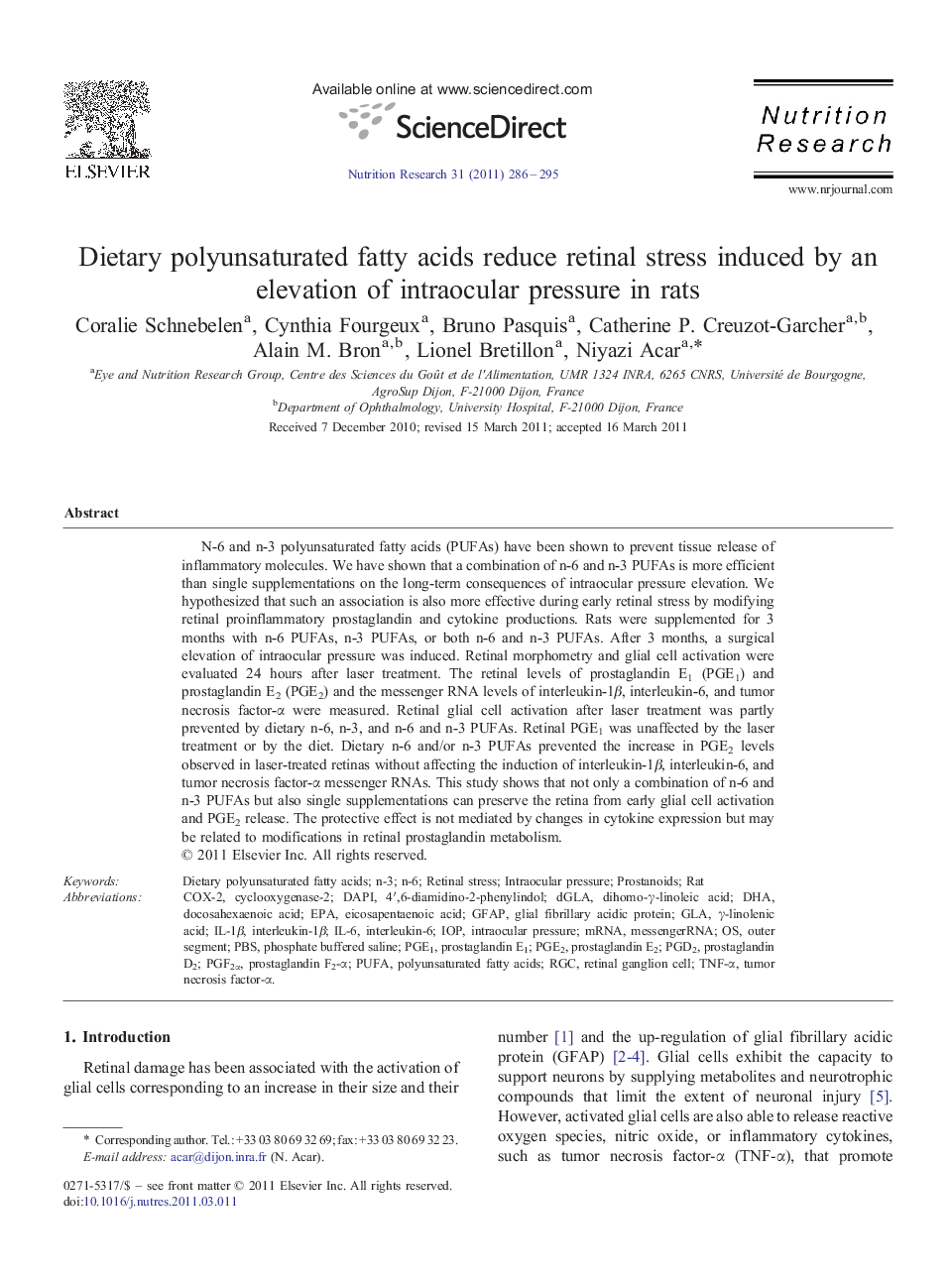| Article ID | Journal | Published Year | Pages | File Type |
|---|---|---|---|---|
| 2809332 | Nutrition Research | 2011 | 10 Pages |
N-6 and n-3 polyunsaturated fatty acids (PUFAs) have been shown to prevent tissue release of inflammatory molecules. We have shown that a combination of n-6 and n-3 PUFAs is more efficient than single supplementations on the long-term consequences of intraocular pressure elevation. We hypothesized that such an association is also more effective during early retinal stress by modifying retinal proinflammatory prostaglandin and cytokine productions. Rats were supplemented for 3 months with n-6 PUFAs, n-3 PUFAs, or both n-6 and n-3 PUFAs. After 3 months, a surgical elevation of intraocular pressure was induced. Retinal morphometry and glial cell activation were evaluated 24 hours after laser treatment. The retinal levels of prostaglandin E1 (PGE1) and prostaglandin E2 (PGE2) and the messenger RNA levels of interleukin-1β, interleukin-6, and tumor necrosis factor-α were measured. Retinal glial cell activation after laser treatment was partly prevented by dietary n-6, n-3, and n-6 and n-3 PUFAs. Retinal PGE1 was unaffected by the laser treatment or by the diet. Dietary n-6 and/or n-3 PUFAs prevented the increase in PGE2 levels observed in laser-treated retinas without affecting the induction of interleukin-1β, interleukin-6, and tumor necrosis factor-α messenger RNAs. This study shows that not only a combination of n-6 and n-3 PUFAs but also single supplementations can preserve the retina from early glial cell activation and PGE2 release. The protective effect is not mediated by changes in cytokine expression but may be related to modifications in retinal prostaglandin metabolism.
